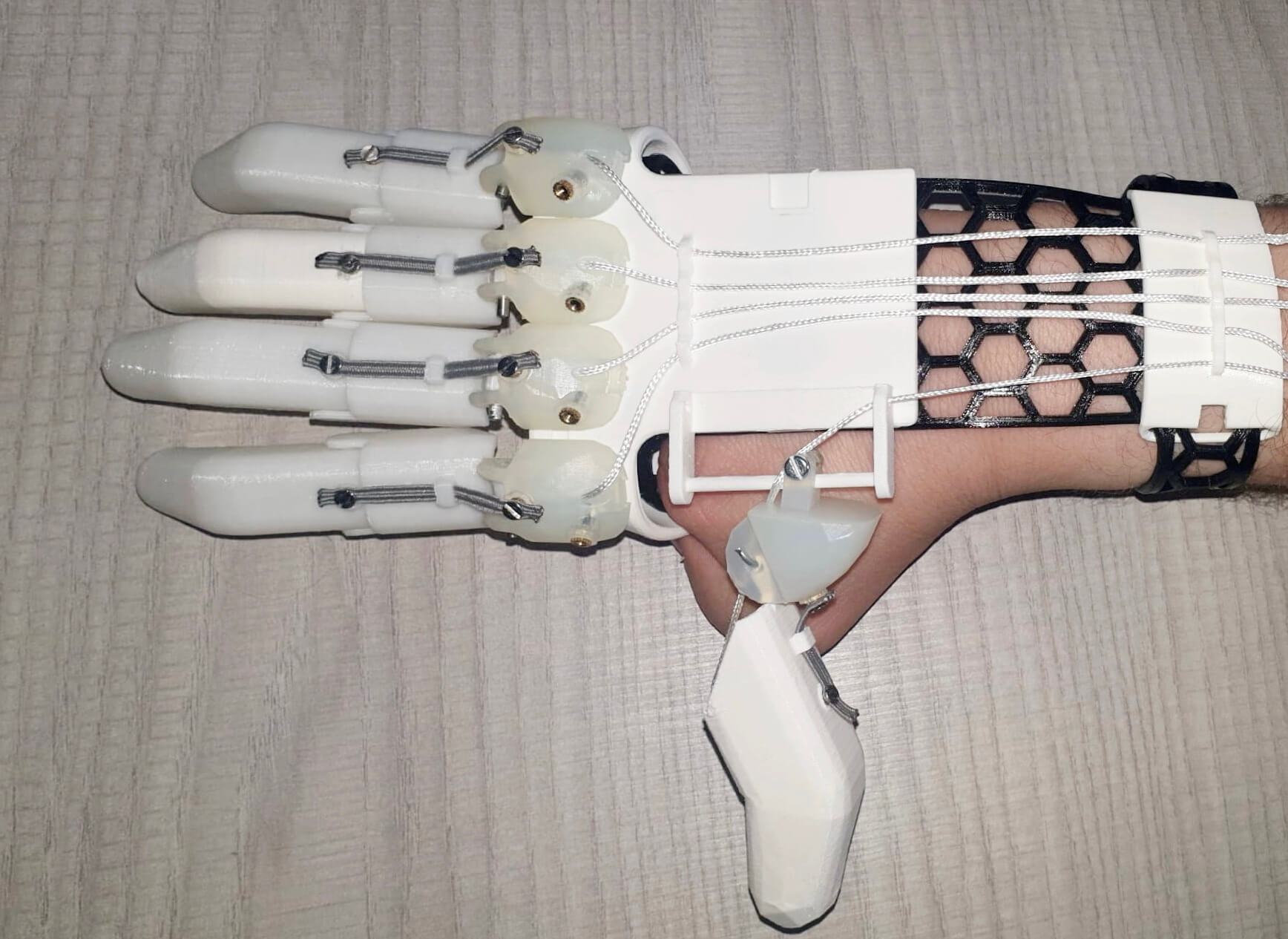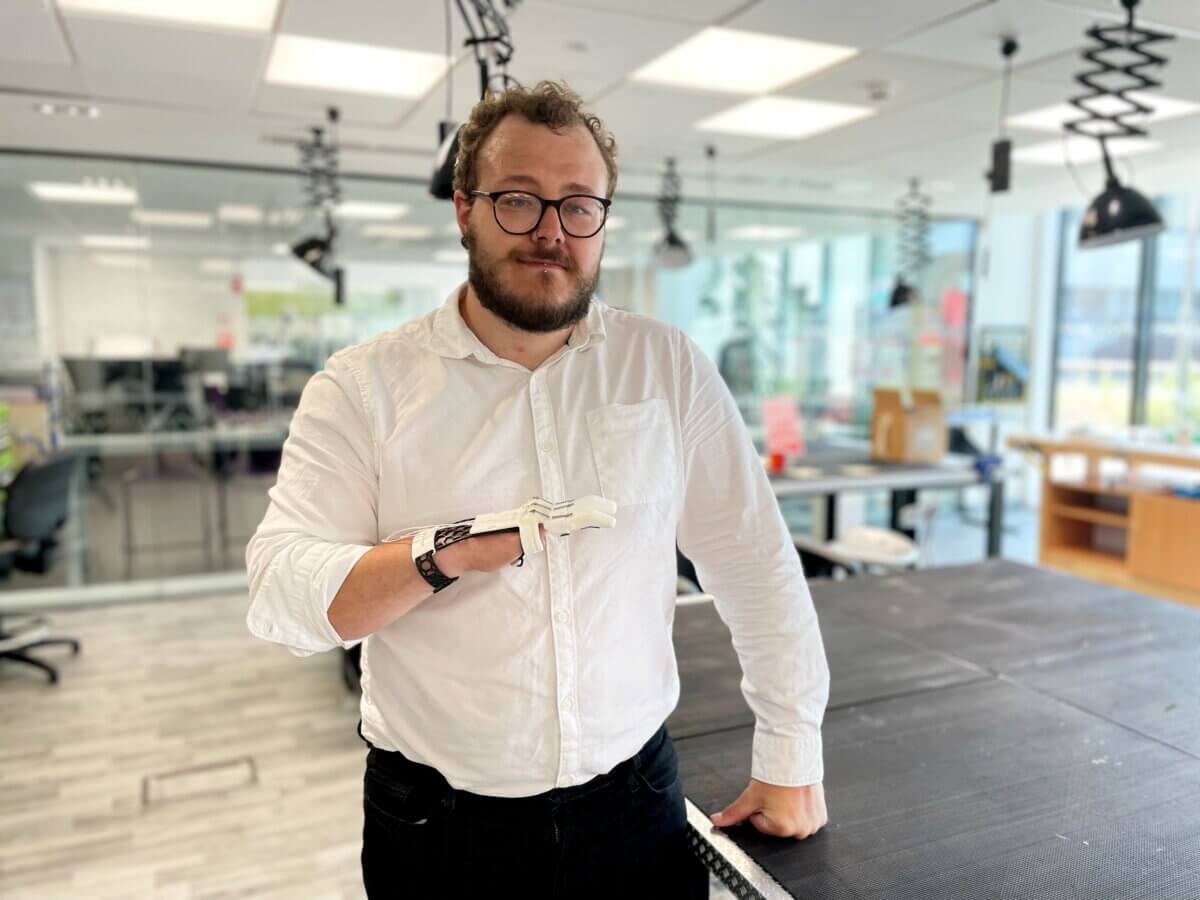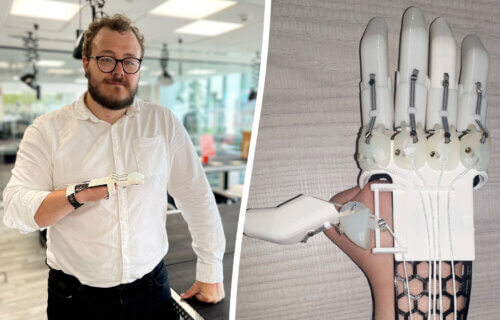GRANTHAM, United Kingdom — A British college student born without fingers has invented a prosthetic hand for about $25 — using a 3D printer. Luke Cox designed the artificial limb for his final-year project and says it could save patients and families thousands of dollars in expensive medical equipment.
The 26-year-old was born with ectrodactyly, a rare congenital condition which left him missing several fingers on his right hand. Currently, prosthetic hands are extremely expensive, which is what inspired Luke to design a model which is more affordable. The Staffordshire University student built the hand using a 3D printer for just £19.97 — just over $25.
“Growing up with a disability has made me a very determined and tenacious individual,” Luke says in an online video. “Knowing what it’s like to grow up with a disability, you have that empathy.”
“This has enhanced my problem-solving skills as I have been forced to learn how to complete certain tasks in unconventional manners,” the student explains. “I’ve never let it hold me back; I always find a way to push forward. Top end prostheses, with electric devices that use muscle signals, can cost around $127,000. Even the more basic body-actuated models can be up to about $5,000.”

Luke’s artificial hand can be molded in hot water to help it fit the size and shape of most hands. The fingers are also removable so they can be upgraded to a larger size for children who are still growing.
“Children have to update their devices two times a year, which is quite expensive and it’s also quite wasteful,” Luke adds. “I’ve designed the prosthesis to have key features, like modularity, which means you can take the fingers off and swap the parts around.”
“You’ve got universality so it should theoretically fit any shape hand and it’s also made using affordable processes such as using 3D printing so it’s also very cheap. If you’ve got one prosthesis you can have throughout your whole childhood, that’s going to make a big difference. I’ve made something physical could help people in the real world and knowing that I’ve made something like that does make me feel quite proud, I suppose.”

Luke says industry experts have given him “positive feedback” and he is now hoping to develop it further so it can be offered to patients. His man-made, 3D-printed hand has also helped land him a job after he graduates at Derby-based train manufacturer Alstom.
High-tech options could give patients back the sense of touch
In 2021, scientists from the Cleveland Clinic unveiled a prototype bionic arm can actually enable amputees to recover their sense of touch. The groundbreaking technology combines intuitive motor control, touch and grip — producing the sensation of actually opening and closing a hand. Researchers say the brain-computer interface is the first to test all three functions all at once in a prosthetic device.
Since then, other teams have also created a game-changing method of growing skin in the shape of complex body parts — like a hand.
How do 3D printers work?
3D printing, also known as additive manufacturing, is a process that creates three-dimensional objects from a digital file. The object is built layer by layer, with each layer being a thinly sliced cross-section of the eventual object.
Here’s a general explanation of how most 3D printers work:
- Designing the 3D model: Before anything can be printed, a 3D model of the object needs to be created. This can be done using computer-aided design (CAD) software or by using a 3D scanner to scan an existing object.
- Slicing the model: Once the model is complete, it’s “sliced” into hundreds or thousands of horizontal layers using slicing software. This slicing process converts the 3D model into a file that the printer can understand and use as a set of instructions for printing. Each slice will correspond to one layer of the print.
- Sending to the 3D printer: The sliced file is then sent to the 3D printer, usually via USB or Wi-Fi.
- Printing the object: The 3D printer heats a material, typically a plastic filament or resin (though other materials can be used), until it liquefies. The printer then deposits this material one layer at a time on the build platform according to the instructions in the file. The material solidifies quickly once it’s been laid down, forming a solid object.
- Layer by layer creation: The 3D printer continues to deposit material layer by layer, gradually building up the object. This can take several hours or even days depending on the size and complexity of the object.
- Post processing: After printing, the object often needs some finishing work. This can include removing support structures used to hold the object in place during printing, sanding the object to smooth its surface, or applying paint or other finish.
South West News Service writer Adam Dutton contributed to this report.


Fantastic! A remarkable feat to take his disability and turn it into not only a working solution for himself but potentially a large number of individuals in need. Such a blessing in disguise. God bless him!